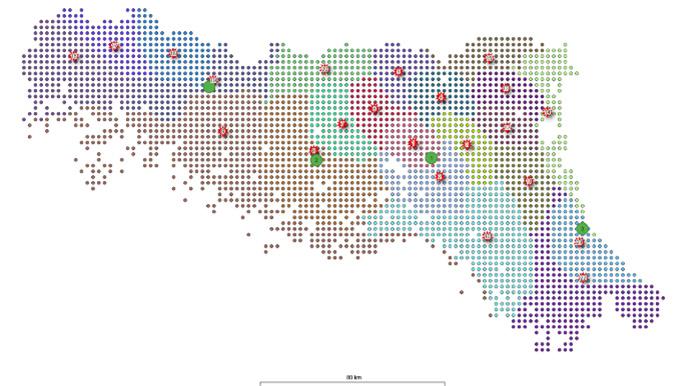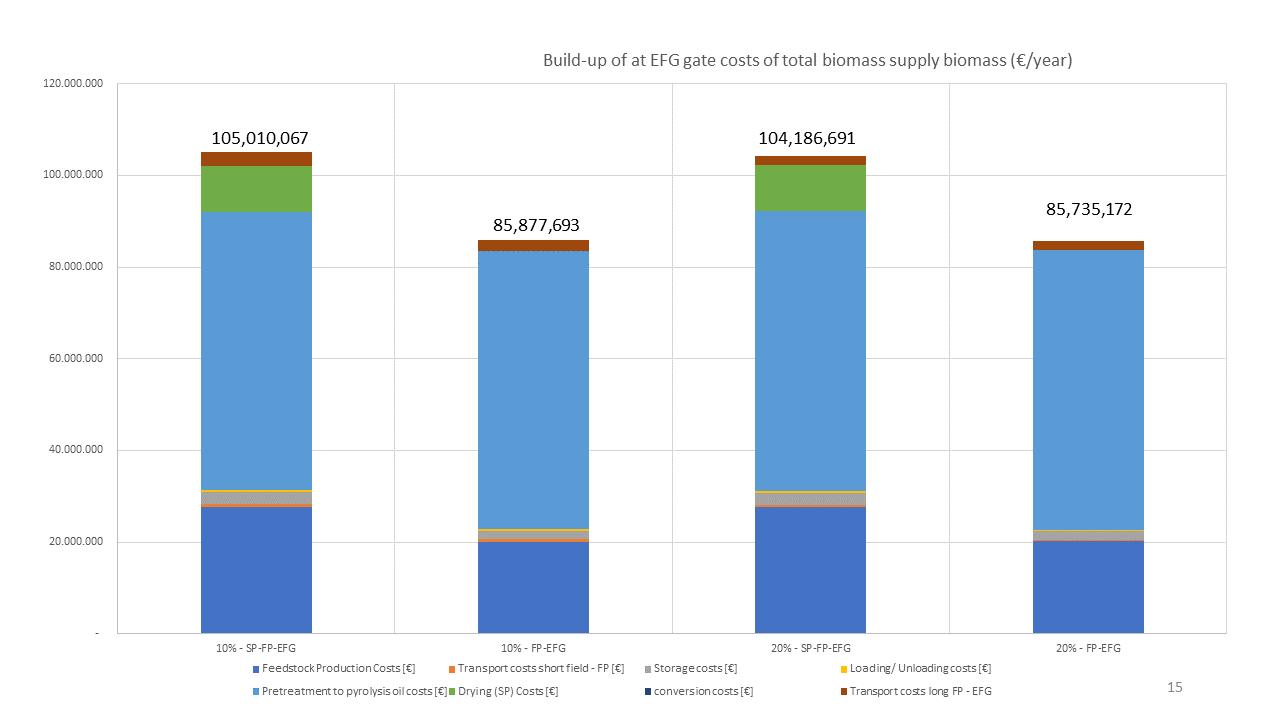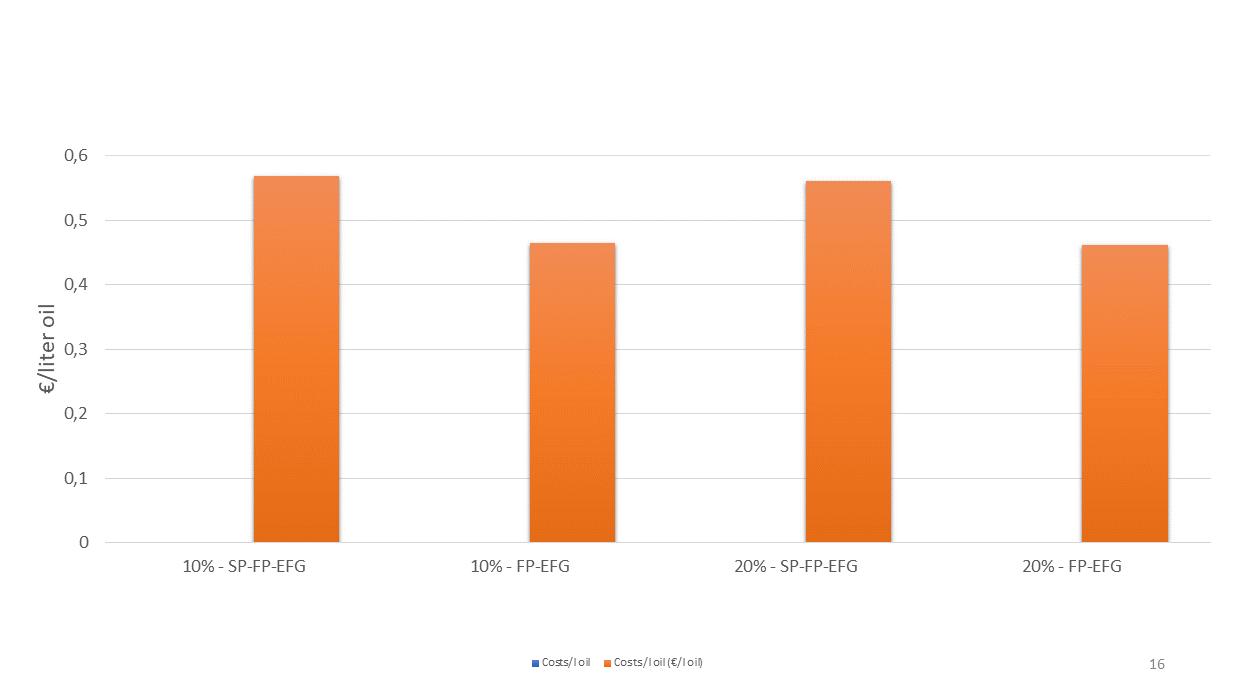
5 minute read
8. Case study of biomass logistics optimization
8
Case study of biomass logistics optimization
Advertisement
One of the main research activities in BECOOL was focused on the optimization of biomass logistic chains for advanced lignocellulosic biofuels. This task was performed by Wageningen University of Research and IIASA with a set of software tools (BeWhere, Bioloco and LocaGIStics), which were previously available and that were updated and further developed in BECOOL. BeWhere is a tool developed by IIASA to identify the optimal locations for the siting of advanced biofuel plants, matching the maximization of energy production with the minimization of costs and GHG emissions. Bioloco (Biomass Logistics Computer Optimization) is an optimisation model developed by Wageningen University and Research, that calculates the optimal biomass value chain solutions within given constraints, such as biomass types, transport types, storage facilities, pre-treatment methods and conversion techniques. Finally, LocaGIStics is a regional simulation tool also developed by Wageningen University and Research, to design optimal biomass supply chains and networks at regional level, and analyze the spatial implications and the environmental and economic performance of in a comparative way. In BECOOL these three tools were updated and used in an integrated way to design and evaluate the most cost-effective logistic chains for advanced lignocellulosic biofuels in different regional conditions in Europe. During the project, the database feeding the three tools was re-designed and enriched with new logistical components and BeWhere was linked with the GLOBIOM model used by IIASA for the sustainability assessment of the value chains.
Case study in Emilia Romagna
The combination of Bioloco and Locagistic was used to analyze a case study, based on a hypothetical value chain for the production of Fischer Tropsch fuels, located in the region of Emilia Romagna, Italy. The configuration of the value chain was the same as the one used in the integrated sustainability assessment, with two different pathways. The first one was based on the decentralized production of fast pyrolysis bio oil (FBPO) by multiple plants, followed by Entrained Flow Gasification of the bio-oil and further Fischer Tropsch synthesis. The second one was based on the same concept, but with the addition of a slow pyrolysis step to dry the biomass, that produces also biochar, further mixed into a slurry together with the bio-oil into and finally sent to the 100 MW EFG plant (Figure 59).
Fig 59. Configuration of the hypothetical Fischer Tropsch value chain for the case study in Emilia Romagna. Source: Wageningen Univeristy and Research.
The spatial allocation of straw and sorghum was conducted at a very detailed level, considering the data of the Land Use Parcel Information System, which were then used to generate grids of biomass availability at different resolutions, with the use of the LocaGIStic and BIOLOCO models. Results of the analysis showed that the local biomass available in Emilia Romagna would be sufficient to feed seven fast pyrolysis plants, and consequently the large scale centralized 100 MW EFG plant.
The mobilization of 10% of the fiber sorghum that could be potentially grown in double cropping, together with 30-40% of the straw produced annually from wheat and barley, could cover the biomass demand of the plant, while the biomass potential that could be obtained by growing giant reed on marginal land and poplar, would not be sufficient for this purpose. Clusters and weighted centers of the spatial distribution of biomass were calculated considering a mobilization rate of 20% of the sorghum potential, and this layer of data was then combined with the distribution of the road network, to identify the best possible location for 22 decentralized fast pyrolysis units, and 4 possible locations for the centralized EFG-FT plant.

Fig 60. Clusters and weighted centres of biomass supply towards 22 decentalized fast pyrolysis plants (red) and 4 possible locations for EFG plant (green). Source: Wageningen University and Research.

Fig 61. Road network from 22 fast pyrolysis plants to 4 possible locations of the EFG plant. Source: Wageningen University and Research.
This work allowed to estimate the cost build up and the average cost of the pyrolysis oil delivered at the EFG plant’s gate for the different scenarios (10% and 20% sorghum mobilization rate). In general, the cost of the biomass feedstock represents about 20-25% of the final cost of the bio-oil, and the conversion cost (pyrolysis unit) is between 60% and 75% of the total. The cost of transport is relatively limited, and the inclusion of a slow pyrolysis step to dry the biomass and produce biochar would increase the cost of about 10%. In this scenario, the cost of the bio-oil delivered to the EFG gate would range from 0.43-0.53 €/l. Although adding a slow pyrolysis plant to the value chain for biomass drying could increase the fuel cost and the direct emissions, the possibility to use biochar as a carbon sequestration measure could counterbalance this effect, both in economic terms and net emissions. The pre-treatment of the biomass via fast pyrolysis prior to gasification has several advantages, in that would enable the sourcing of the plant from different biomass streams, converting different feedstock into a homogeneous fuel for the EFG plant, increasing the security of supply.


Fig 62. Average cost at EFG-FT plant gate at €/ton biomass dm input and at €/liter pyrolysis oil (left). Fig 63. Average cost at EFG-FT plant gate at €/ton biomass dm input and at €/liter pyrolysis oil (right). Source: Wageningen Univeristy and Research.
Key Points: : Biomass logistics optimization
• A set of integrated decision support tools is available to design and evaluate the most costeffective logistic chains for advanced lignocellulosic biofuels in different regional conditions.
• This work allows us to estimate the cost build up, the average cost and the GHG mitigation potential of intermediate energy carriers and final products obtained from lignocellulosic biomass value chains in specific sites.










